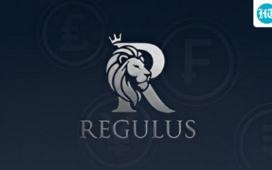This article first appeared on GuruFocus.
Stablecoins have evolved from an experimental asset to a key component of the global payment system at an unprecedented pace. According to data, the annual transaction volume of stablecoins has surged from $3.3 billion in 2018 to $18.4 trillion in 2024, surpassing the transaction volumes of traditional payment giants Visa ($15.7 trillion) and Mastercard ($9.8 trillion). As Visual Capitalist points out, this milestone not only signifies the transformation of stablecoins from niche experiments into mainstream payment infrastructure but also highlights their central role in the future financial ecosystem.
From 2023 to 2024, several landmark events have acted as catalysts for the rise of stablecoins. Citigroup partnered with Coinbase to extend digital asset payment solutions for institutional clients, opening a new chapter in digital asset adoption; nine major European banks formed a consortium to issue a Euro-backed stablecoin, with plans to launch in 2026; Western Union announced plans to issue USD-backed stablecoin USDPT on the Solana blockchain, with Anchorage Digital Bank overseeing issuance and custodial services; and Visa revealed it would support settlements on four new blockchains and four stablecoins, further consolidating its leadership in global payments.
On the capital front, Mastercard is also making significant moves, with plans to acquire stablecoin and crypto infrastructure provider Zero Hash for $1.5 to $2 billion, alongside ongoing talks to acquire BVNK, a UK-based fintech platform, from Coinbase.
As traditional financial institutions embrace digital assets, they are faced with two distinct pathways: stablecoins and tokenized deposits.
Tokenized deposits, as an internal digital solution, allow banks to convert customer deposits into digital tokens, operating within existing regulatory frameworks while seamlessly integrating with traditional clearing systems. Citigroup’s CEO, Jane Fraser, emphasized that tokenized deposits represent a safer and more compliant choice for banks.
However, with the rapid growth of the global crypto market, banks recognize the need to connect with public blockchains and crypto ecosystems, making stablecoins an inevitable option. Citigroup’s partnership with Coinbase highlights this dual approachleveraging tokenized deposits for compliance while also integrating stablecoins to connect with the broader crypto ecosystem.





